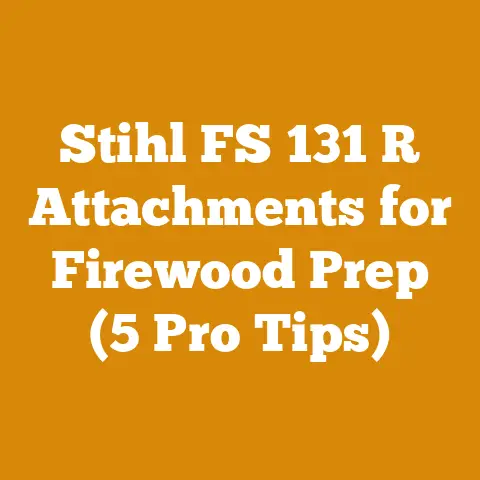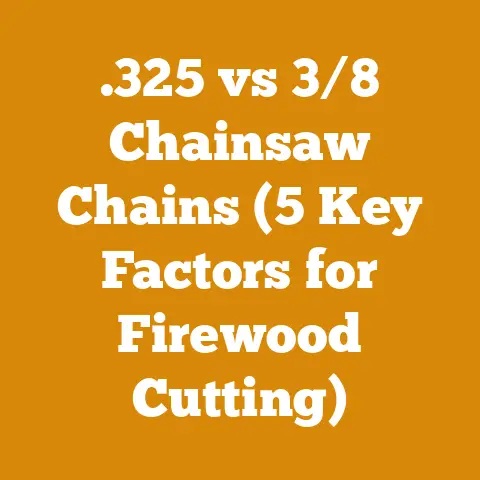Patio Enclosure DIY: Temporary Porch Solutions (Woodcraft Hacks)
The urge to connect with the outdoors is as old as humanity itself. We crave that feeling of fresh air on our skin, the gentle rustle of leaves, and the warmth of the sun. But sometimes, Mother Nature throws curveballs – rain, wind, bugs – that make enjoying our patios a bit…challenging. That’s where the idea of a temporary patio enclosure comes in, a concept that’s been around in various forms for ages. From simple canvas awnings to more elaborate screened-in porches, the desire to create a comfortable outdoor haven is timeless. Today, we’re diving into the world of DIY patio enclosures, focusing on temporary porch solutions with a woodcraft twist. I’ll share my experiences, insights, and some wood processing hacks to help you build your own slice of outdoor paradise.
Patio Enclosure DIY: Temporary Porch Solutions (Woodcraft Hacks)
Why a Temporary Patio Enclosure?
Let’s face it, building a permanent structure is a commitment. It requires permits, significant investment, and a whole lot of time. A temporary patio enclosure, on the other hand, offers flexibility. You can put it up when the weather’s unfavorable and take it down when you want to bask in the full glory of the open air. It’s a perfect solution for renters, homeowners who aren’t ready for a major renovation, or anyone who simply enjoys changing things up.
From my own experience, I remember when I first moved into my current house, the back patio was completely unusable during the summer months due to the relentless mosquito population. I considered building a permanent screened-in porch, but the cost and complexity seemed daunting. That’s when I started exploring temporary solutions, and I was amazed at the possibilities.
Understanding Your Needs & Space
Before you even think about picking up a saw, it’s crucial to assess your needs and the limitations of your space. Ask yourself these questions:
- What are you trying to protect against? (Rain, sun, bugs, wind)
- How much space do you have? (Measure your patio dimensions)
- What’s your budget? (Temporary solutions can range from budget-friendly to moderately expensive)
- How long will the enclosure be up? (A weekend? A season?)
- What aesthetic are you going for? (Rustic, modern, minimalist?)
Answering these questions will guide your design choices and help you select the right materials. For example, if you’re primarily concerned about bugs, a simple screen enclosure might suffice. If you need protection from rain and sun, you’ll need something more robust.
Design Ideas: Woodcraft Meets Temporary
Here are a few design ideas that incorporate woodcraft and offer temporary solutions:
- The Freestanding Screen Frame: This is a simple and versatile option. Build a rectangular frame using pressure-treated lumber (more on wood selection later). Attach screen mesh to the frame using staples or tacks. You can then create multiple frames and connect them using hinges or removable fasteners to form an enclosure. This is easily disassembled and stored.
- The Lean-To Awning: If your patio is adjacent to your house, you can build a simple lean-to awning using wooden posts and a tarp or canvas. The posts can be secured to the patio using concrete anchors or weighted bases. This provides excellent protection from sun and rain.
- The Lattice Privacy Screen: This option focuses on creating privacy and blocking wind. Build a series of lattice panels using thin strips of wood. Connect the panels using hinges to create a folding screen that can be positioned around your patio.
- The Upcycled Pallet Enclosure: Pallets are a readily available and inexpensive source of wood. With a little creativity, you can disassemble pallets and use the wood to build frames for screen panels or even create a rustic-looking wall.
- The Modular Wood and Fabric System: This is a more advanced option that involves building a modular frame system using dimensional lumber. You can then attach fabric panels to the frame using Velcro or snaps. This allows you to easily change the panels depending on the weather or your mood.
Wood Selection: The Heart of Your Project
The type of wood you choose will significantly impact the durability, appearance, and cost of your temporary patio enclosure. Here’s a breakdown of some common options:
- Pressure-Treated Lumber: This is the go-to choice for outdoor projects because it’s resistant to rot, decay, and insect infestation. It’s typically made from Southern Yellow Pine that has been chemically treated. While it’s durable, it can be more expensive than other options.
- Cedar: Cedar is naturally resistant to decay and insects, making it a good choice for outdoor use. It also has a beautiful reddish-brown color and a pleasant aroma. However, cedar is generally more expensive than pressure-treated lumber.
- Redwood: Similar to cedar, redwood is naturally resistant to decay and insects. It’s also known for its stability, meaning it’s less likely to warp or crack. Redwood is often used for decking and outdoor furniture.
- Pine: Pine is a relatively inexpensive and readily available wood. However, it’s not naturally resistant to decay and insects, so it needs to be treated or sealed properly before being used outdoors.
- Reclaimed Wood: Using reclaimed wood is a great way to add character and reduce your environmental impact. However, it’s important to carefully inspect reclaimed wood for signs of rot, decay, or insect infestation. You may also need to remove nails, screws, and other debris.
Data Point: A study by the USDA Forest Service found that pressure-treated lumber can last 20-30 years in outdoor applications, while untreated pine may only last 5-10 years. This highlights the importance of choosing the right wood for your project.
My Personal Insight: I’ve found that using a combination of wood types can be cost-effective. For the structural frame, I might use pressure-treated lumber, while using cedar for decorative trim to add a touch of elegance without breaking the bank.
Essential Tools for Wood Processing
No woodcraft project is complete without the right tools. Here’s a list of essential tools for building a temporary patio enclosure:
- Safety Glasses: Protect your eyes from flying debris.
- Work Gloves: Protect your hands from splinters and sharp edges.
- Measuring Tape: Accurate measurements are crucial for a successful project.
- Pencil: For marking cut lines and measurements.
- Circular Saw: For cutting lumber to size.
- Miter Saw: For making precise angle cuts.
- Drill/Driver: For drilling holes and driving screws.
- Screws: For fastening wood together.
- Staple Gun: For attaching screen mesh or fabric to frames.
- Level: To ensure your structure is level and plumb.
- Clamps: To hold wood in place while you’re cutting or fastening it.
- Sandpaper: For smoothing rough edges.
Tool Tip: Invest in quality tools. While it might be tempting to buy the cheapest options, quality tools will last longer, perform better, and make your work easier. I’ve learned the hard way that a dull saw blade is a recipe for frustration (and potential injury!).
Wood Processing Techniques: Making the Most of Your Lumber
Once you’ve selected your wood and gathered your tools, it’s time to start processing the lumber. Here are a few key techniques:
- Cutting: Accurate cuts are essential for a well-built structure. Use a sharp saw blade and follow your measurements carefully. If you’re using a circular saw, use a guide to ensure a straight cut.
- Drilling: When drilling holes for screws, use a drill bit that’s slightly smaller than the screw diameter. This will prevent the wood from splitting.
- Sanding: Sanding smooths rough edges and prepares the wood for finishing. Start with a coarse grit sandpaper and gradually move to a finer grit.
- Fastening: Use screws that are long enough to penetrate both pieces of wood securely. Avoid over-tightening screws, as this can strip the threads or split the wood.
- Finishing: Applying a finish to your wood will protect it from the elements and enhance its appearance. Choose a finish that’s appropriate for the type of wood you’re using and the level of protection you need. Options include paint, stain, sealant, and varnish.
Data Point: According to a study by the Forest Products Laboratory, applying a water-repellent finish to wood can reduce moisture absorption by up to 75%, significantly extending its lifespan.
Safety First: Protecting Yourself While You Work
Woodworking can be dangerous if you’re not careful. Always follow these safety precautions:
- Wear safety glasses and work gloves.
- Use power tools according to the manufacturer’s instructions.
- Keep your work area clean and organized.
- Never work when you’re tired or distracted.
- Be aware of your surroundings.
- If you’re working with pressure-treated lumber, wear a dust mask to avoid inhaling sawdust.
- Always unplug power tools before changing blades or making adjustments.
- If you’re working with sharp tools, keep your fingers away from the cutting edge.
- If you’re unsure about how to use a tool, ask for help from someone who is experienced.
My Safety Lesson: I once rushed a project and didn’t properly secure a piece of wood before cutting it with a circular saw. The wood kicked back, and I narrowly avoided a serious injury. That experience taught me the importance of taking my time and following safety procedures.
Case Study: The DIY Screened-In Patio for Under $300
Let’s break down a real-world example: building a simple screened-in patio enclosure using the freestanding screen frame method.
Equipment Used:
- Pressure-treated 2×4 lumber
- Screen mesh
- Staple gun
- Screws
- Hinges
- Measuring tape
- Circular saw
- Drill/driver
Wood Types:
- Pressure-treated lumber for the frame (durability and weather resistance)
Process:
- Measure the patio: Determine the dimensions of the area you want to enclose.
- Cut the lumber: Cut the lumber to size to create the frame for each screen panel.
- Assemble the frames: Assemble the frames using screws.
- Attach the screen mesh: Staple the screen mesh to the frames, ensuring it’s taut and wrinkle-free.
- Connect the panels: Connect the panels using hinges to create a folding enclosure.
- Secure the enclosure: Use stakes or weights to secure the enclosure to the ground.
Safety Considerations:
- Wear safety glasses and work gloves.
- Use a sharp saw blade to prevent kickback.
- Be careful when using the staple gun.
- Ensure the enclosure is stable and won’t tip over in the wind.
Cost Breakdown:
- Lumber: $150
- Screen mesh: $50
- Screws and hinges: $50
- Staple gun and staples: $50
Total Cost: $300
Outcome:
This project resulted in a functional and aesthetically pleasing screened-in patio enclosure that provided protection from insects and allowed the homeowner to enjoy their outdoor space more comfortably. The enclosure was easy to assemble and disassemble, making it a perfect temporary solution.
Cost-Effectiveness and Long-Term Value
Building a temporary patio enclosure yourself can save you a significant amount of money compared to hiring a professional contractor. Not only that, you have complete control over the materials and design, allowing you to customize the enclosure to your specific needs and preferences.
Data Point: The average cost of building a permanent screened-in porch ranges from $2,000 to $10,000, while a temporary DIY enclosure can be built for a fraction of that cost.
Furthermore, the skills you learn while building your own enclosure can be applied to other woodworking projects around your home. It’s an investment in your skills and your property.
Troubleshooting Common Problems
Even with careful planning and execution, you might encounter some challenges along the way. Here are a few common problems and how to solve them:
- The frame is not square: Use a framing square to ensure the frame is square before fastening it together.
- The screen mesh is sagging: Use a screen stretching tool to tighten the mesh before stapling it to the frame.
- The enclosure is not stable: Use stakes or weights to secure the enclosure to the ground.
- The wood is splitting: Use a pilot hole before driving screws.
- The finish is peeling: Prepare the wood properly before applying the finish.
Maintaining Your Temporary Enclosure
To ensure your temporary patio enclosure lasts as long as possible, it’s important to maintain it properly. Here are a few tips:
- Clean the enclosure regularly with soap and water.
- Inspect the enclosure for signs of damage and make repairs as needed.
- Store the enclosure in a dry place when it’s not in use.
- Reapply finish as needed to protect the wood from the elements.
Looking Ahead: Innovations in Temporary Enclosure Design
The world of temporary patio enclosures is constantly evolving. New materials and designs are emerging all the time. Here are a few trends to watch out for:
- Modular systems: These systems allow you to easily add or remove sections of the enclosure as needed.
- Retractable screens: These screens can be rolled up or down depending on the weather.
- Smart technology: Some enclosures are equipped with sensors that automatically adjust the temperature and humidity inside.
- Sustainable materials: More and more manufacturers are using sustainable materials like bamboo and recycled plastic to build temporary enclosures.
Final Thoughts: Your Outdoor Oasis Awaits
Building a temporary patio enclosure is a rewarding project that can transform your outdoor space into a comfortable and enjoyable haven. By carefully planning your project, selecting the right materials, and following safety precautions, you can create a beautiful and functional enclosure that will last for years to come. So, grab your tools, gather your materials, and get ready to build your own outdoor oasis! Remember, the journey is just as important as the destination, so enjoy the process of creating something with your own hands. And who knows, you might just discover a newfound passion for woodworking along the way.






